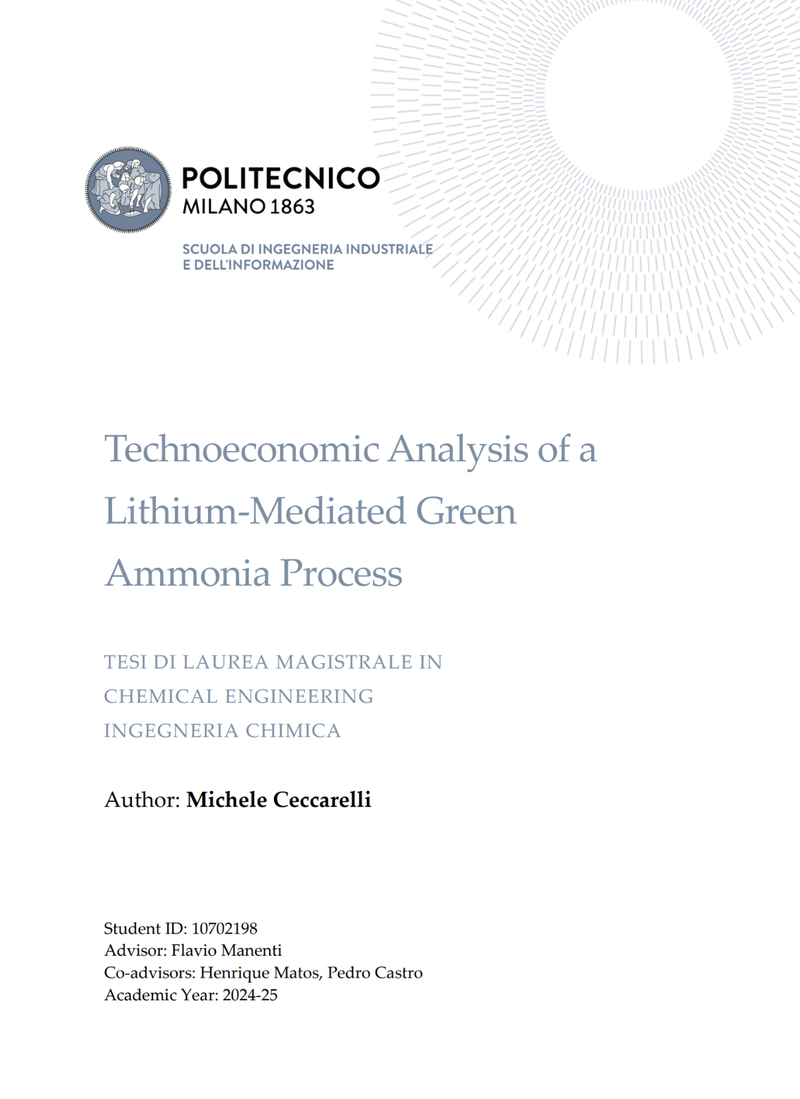Master Thesis: "Technoeconomic Analysis of a Lithium-Mediated Green Ammonia Process"

Abstract
Due to the increasingly higher interest and concerning about global warming, ammonia production has become one of the candidates among the major industrial sectors to be decarbonize, because of its substantial carbon footprint. The state of art of green ammonia production includes several novel technologies, developed at laboratory scale and still with a low technology readiness level (TRL), but that can attract interest in the upcoming years, thanks to the continuous research. Among them, lithium mediated ammonia synthesis (LiMAS) is an electrochemical ammonia synthesis pathway that use nitrogen and proton source. The capability of lithium to fix and reduce nitrogen can dramatically lower the operating temperature and pressure adopted in the usual Haber-Bosch technology, which is a significantly energy demanding process. Given its electrochemical nature, the LiMAS might be exploited to produce completely green ammonia, by using electricity coming from renewable energy sources. Despite its promising nature, to date the TRL is low, and the problems and limitations featuring its application and scalability are still various. In this work, the state of the art of green ammonia production and of LiMAS is described, including operating conditions, configurations, and materials adopted in the experimental studies found in literature. Moreover, a technoeconomic analysis is carried out to assess the competitiveness of the process. Different scenarios are evaluated, coupled with an air separation unit (ASU), simulated in Aspen Plus V14, an electrolyzer to produce hydrogen, and the ammonia separation. Notably, four cases were evaluated, changing the electrolyser technology, and improving their performances in a 2030 perspective. Eventually, the critical aspects and parameters are summarized, performing several sensitivity analyses to show their influence on the process operation. The levelized cost of ammonia (LCOA) results to be highly variable depending on the cell parameters, but particularly on plant wide parameters such as electricity price, given the major electrical nature of the process. The process can compete with up-to-date technologies when cheap electricity sources are used, but it could favour a decentralized ammonia with low production rates, producing green ammonia and opposing to the highly carbon-intensive Haber-Bosch process.
Key-words: Green ammonia, Ammonia production, Lithium-mediated process, Electrolyzer, Air separation unit, Production costs, Levelized cost of ammonia, Sensitivity analysis.
- Repository (coming soon)